When existing wetlands are properly managed and conserved, they provide a plethora of ecosystem services. Unfortunately, this is not the case for many wetlands and it is often necessary to make changes in management or undertake additional interventions to restore their functionality as almost 50% of Mediterranean wetlands have been lost since 1970 and the surface area of Mediterranean coastal wetlands has shrunk by 10% in the last decade (Mediterranean Wetland Observatory, 2012). Wetland restoration is the manipulation of a former or degraded wetland’s physical, chemical, or biological characteristics to return its natural functions. Wetland restoration can have multiple benefits including biodiversity, human well-being, climate change adaptation and socio-economic conditions just to name a few.
Wetland benefits can be both collective and individual, impacting personal, ecological, cultural and socio-economic values and today these values are recognized through different agendas including the UN Decade for the restoration of ecosystems 2021-2030, the 2030 Agenda for Sustainable Development and the EU Green Deal. In order to transform these agendas into concrete actions, it is necessary to have a holistic approach to wetland restoration with a clear strategy for planning, implementation, and monitoring and evaluation
The importance given to restoration at the international scale through the EU restoration agenda and UN restoration decade has had an impact at the Tour du Valat, with a reorientation of our work on our restoration activities. This new focus has allowed us to considerably showcase some of our on-going projects including the renaturalisation of the former Camargue saltworks, and to initiate new projects such as the reconversion of former farmlands into wetlands at the Petit Badon and Cassaïre estates. These new and ongoing projects make use of the TdV’s strengths, integrating scientific research and its application on the ground, building a real showcase for the Camargue. The projects involve passive and active restoration activities in a mosaic of wetland habitats that can eventually be transferred and shared with other sites around the Mediterranean Basin.
Some of Tour du Valat restoration projects:
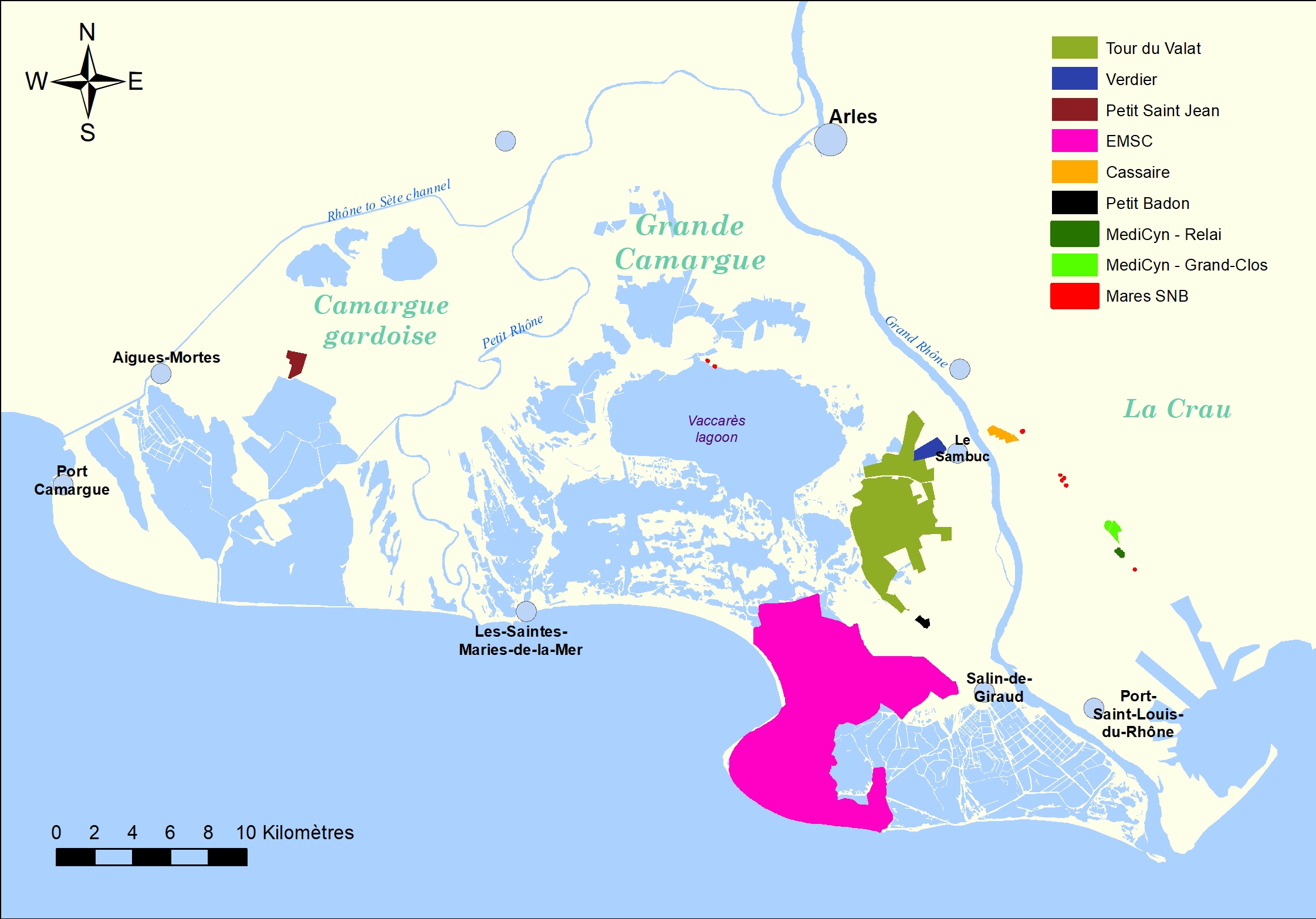
Lagoons and Marshes on the former Camargue Saltworks site (LMCS)
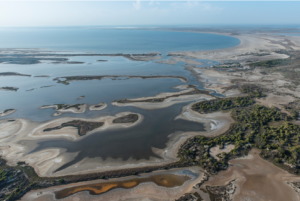
The former saltworks restoration project is an example of how humans can help reverse human-made modification of ecosystems through adaptive restoration until nature can regain its functionality and restore its resilience. The former saltworks (6.500 ha of lagoon, salt marsh and dunes) were sold to the French Coastal Conservancy; the Natural Regional Park of Camargue, the Camargue Reserve and the Tour du Valat were delegated the role of co-managers for the site. The main objectives were to restore the natural characteristics and processes of the ecosystem to ensure connectivity among different water bodies, increase natural resilience and reduce the effects of climate change and the risks of natural disasters. Interventions have been implemented according to the Nature based Solution (NbS) approach and included restoration of gravitational water flows and abandonment of seafront dykes, leading to the creation of a more natural sea coast. This project has contributed to restoring both lagoons and saltmarsh vegetation (Salicornia) as well as positively impacting the different fish species and populations.
Cassaïre site
At the time of its acquisition by the French Coastal Conservancy in 2004, this site was made up of 6.5 ha of natural environments and 63.5 ha of agricultural land (rice, wheat and grazed artificial meadows) established on an ancient fluvial dune. In 2009, the Tour du Valat and the Association of the Friends of the Marais du Vigueirat initiated an ambitious restoration project to rehabilitate almost half of the site as marshlands (30 ha). Important engineering works were carried out from 2012 to 2016 in order to recreate the topography which had been levelled to develop agricultural activities. In order to promote the installation of plant communities typical of these environments seed or sediment transfers were carried out from samples taken from reference sites. The objective of these actions was to promote the development of submerged macrophytes in the deep zones of the marsh (refuges for aquatic macro-invertebrates and food for ducks), bulrush at the edge of the marshes (emergent plant adapted to the temporary grazed environments of the Camargue, attractive to water birds), salt meadows on the periphery of the marshes, and Mediterranean grasslands on the highest elevations (50 to 100 cm). The site is currently used by local horse breeders, hunters and environmental education structures.
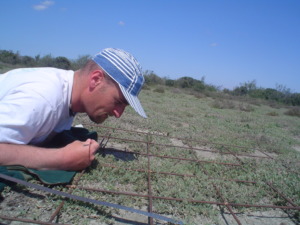 |
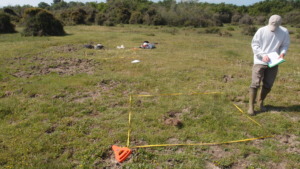 |
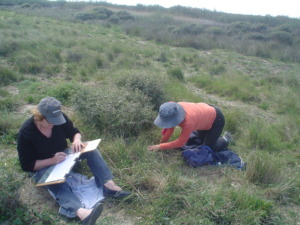 |
Restoration work ©L. Ernoul/Tour du Valat
Petit Badon restoration project
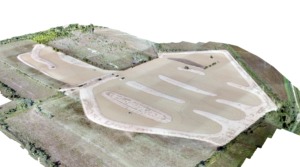
The Petit Badon restoration project was initiated in 2020 on a private property located in Camargue. After intensive baseline studies and important excavation works, over 14 ha of temporary brackish marshes (Mediterranean amphibious halonitrophilous turfs (Heleochloion)) were created. The site also restored some small islands, knolls and dikes which can be beneficial for breeding waterbirds.
Verdier Marshes
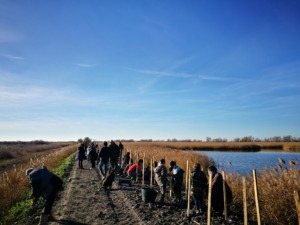
The Tour du Valat has been implementing a collaborative management project with villagers for over 20 years in the hamlet of Le Sambuc in the Camargue (project details). The project restored 120 ha of natural wetlands that had been converted to fish farming in the 1960s. The conservation objective was to recover a mosaic of Camargue wetlands remarkable for their biodiversity by moving from a permanent artificial pond to a differentiated hydraulic management inspired by Mediterranean hydrological cycles. Today, this mosaic of environments – reedbeds, salt meadows, tamariçaie, scirpaie, etc. – is favorable to a varied fauna and flora, including some species that have become rare, such as the Crypsis aculeata (Crypsis aculeata, a regionally protected plant), the three-bracted loosestrife (Lythrum tribracteatum, a nationally protected plant). Similarly, the saltbush, thought to have disappeared from the Camargue, has developed in the Enganes sector. The site supports a variety of activities for villagers, including grazing, hunting, fishing, hiking, bird watching, and educational programs.. The new habitats are conducive to educational and recreational activities, with an average of over 1,000 visitors per year.
Tour du Valat Estate (project Replenish)

The Eurasian Bittern (Botaurus stellaris) is a species in decline at the European level, and vulnerable in France. It is a bird species emblematic of reed beds, which are home to a diverse and threatened fauna. Reed beds are one of the emblematic ecosystems of coastal wetlands in general, and of the Camargue in particular. They provide many ecosystem services including improving water quality through their purification function, acting as a sponge by restoring water in periods of summer drought, mitigating the load of waves on coastal dykes and contributing to curb the decline of biodiversity by maintaining specific species.
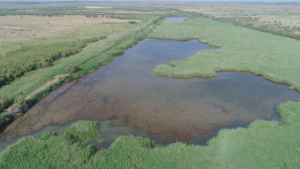
This project restores reed beds on the Tour du Valat Estate and the Verdier Marshes through hydraulic restoration activities to improve the functionality and the circulation of water (approximately 25 Ha). These works aim to 1) recover the control of the water levels to ensure the good quality of bittern reproduction sites; 2) limit the contribution of pollutants to ensure the quality of the food of the target species (amphibians, small fishes, aquatic invertebrates) and 3) reduce the invasion of ligneous plants (Tamarix).
Projet MediCyn (towards a sustainable hydraulic management reconciling Mediterranean biodiversity and hunting and pastoral uses)
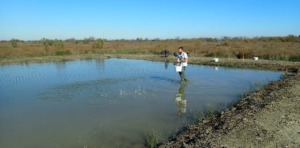
The natural areas located in the Industrial-Port Zone of the Grand Port Maritime de Marseille (GPMM) display an exceptional biodiversity. In order to preserve it, the GPMM in collaboration with the Tour du Valat, initiated a wetland restoration project in 2019. This project aims to improve the state of conservation of Mediterranean biodiversity by restoring temporary ponds in two Natura 2000 sites. In the past, water management was essentially based on the need to respond to traditional socio-economic activities, leading to a banalization of the flora and fauna as well as to eutrophication. Considered as a habitat in its own right, these temporary ponds are rare and have a very high conservation value. This project aims to restore the temporary ponds while maintaining traditional hunting and grazing practices.
In 2022, the Tour du Valat also began working on two new large scale European projects on Wetland Restoration: Waterlands and RestCoast. These new project will be at the forefront of our restoration work in the coming years.
Contact : Lisa Ernoul (e-mail), Research Scientist – Management and restoration of Natural and Agricultural ecosystems theme manager.